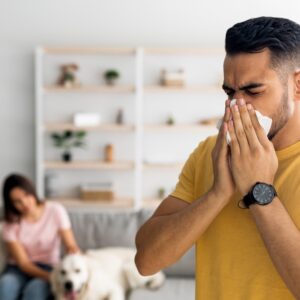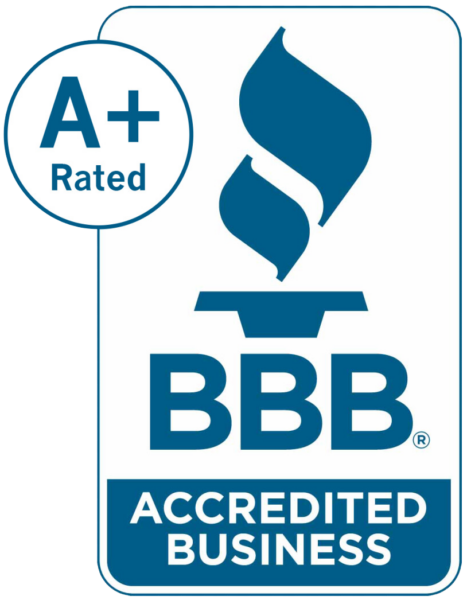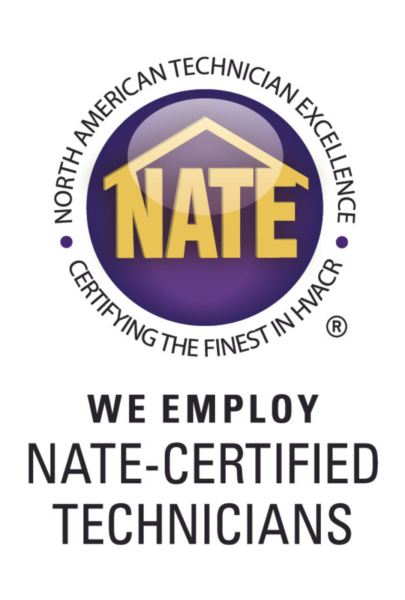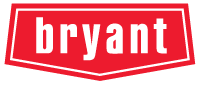About Indoor Air Quality
Indoor air pollution is a significant concern in homes and businesses. As you live or work indoors, you are surrounded by airborne pollutants that can be 2-5 times greater than outdoor air.
Types of Indoor Air Pollution & Contributing Factors
There are different sources of indoor air pollution, and many are especially dangerous to kids, the elderly, and those with health issues. Your indoor air is under constant attack from airborne pollutants, and you need an effective defense.
The following are just a few of the many things that can cause indoor air pollution, some symptoms, and the accessories to solve your air quality concerns:
| Issue/Source | Common Symptoms* | Solution |
|---|---|---|
| Particle Allergens: Pets, dust mites, mold, pollen, and animal dander | Known to trigger and worsen asthma and allergy symptoms | Electronic Air Purifier |
| Chemical Pollutants Cleaners, paints, adhesives, pesticides, cosmetics, and air fresheners | Nausea and headaches. At high levels, can cause eye irritation | Fresh Air Ventilation |
| Carbon Dioxide Simple breathing. Burning candles, gas, wood, and other combustibles | Drowsiness, poor concentration | Fresh Air Ventilation |
| Relative Humidity Too much or not enough moisture in the air | Moist Air: Mold and dust mites Dry Air: Nosebleeds, dry eyes, and skin | Dehumidifier, Humidifier |
| Mold and Bacteria on the Cooling Coil Dampness | Coughing, respiratory issues | UV Lamp |
Solutions to Fix Indoor Air Pollution
Fortunately, options exist for those seeking ways to minimize indoor air pollution levels. A home air quality inspection is a good starting point to determine which of the following options are most appropriate for specific situations:
Electronic Air Purifier
This solution uses a multi-step, active and passive, cleaning process to collect and destroy pollutants such as pollen, dander, mold, tobacco smoke, viruses, and bacteria.
- The first step, an active one, creates a cloud of electrically charged ions that attach themselves to particles, bacteria, and viruses suspended in the air as they pass through.
- The next step, which is passive, collects the charged particles in filter media with a high MERV rating. This filter media has an opposite electrical charge.
- The final active step takes the captured particles, which are attached to the filter media, and subjects them to a strong electric field. This electric field inactivates select germs with up to 99% effectiveness.
Fresh Air Ventilation
This method removes stale, polluted indoor air, and replaces it with clean, outside air. There are a few common options for fresh air ventilation of your home or business including:
- Natural Ventilation – Natural ventilation is a quick and easy way to dilute indoor air pollutants. It is as simple as opening a window or door. But it has drawbacks. Whatever is outside… that gets into your building. Hot humid air in the summer, cold dry air in the winter, pollen, dust, and dirt. Plus, natural ventilation is only for the area the window or door is in.
- Whole Home Outside Air Ventilation – A small opening is created in the wall of the building. This opening is protected from outdoor elements/pests and connected to the return air side of the building’s ductwork. As the system is running, fresh air is pulled directly from the outdoors and circulated throughout the building. It has the same drawbacks as natural ventilation. Except the dust dirt, and pollen are filtered out by the system’s air filter.
- Heat Recovery Ventilator (HRV) & Energy Recovery Ventilator (ERV) – There are two versions of these ventilation options. ERVs and HRVs are designed to simultaneously remove stale, polluted indoor air, and refresh your home with clean, outside air. They require two small openings in your building, one for fresh air intake and one for exhaust. With both connected to your systems ductwork.
These units maintain higher energy efficiency by recovering heat from the outgoing air and transferring it to fresh, incoming air without mixing the air streams. This allows the incoming air to closely match the temperature of air circulating through your building.
By minimizing heat loss and helping maintain proper humidity ERV units can maximize energy efficiency. Most HRVs and ERVs have built in air filters to remove dust, dirt, and debris from the incoming air.
UV Light
UV lights kill bacteria and mold growing on and around the indoor coil, enhancing system efficiency and improving the quality of your indoor air.
As air passes through the cooling coil, mold spores, bacteria and fungi stick to its damp surfaces. The buildup of these contaminants can reduce system performance and lead to the release of harmful mold spores and unpleasant odors into your home. To help alleviate these issues, germicidal UV lamps are mounted near the cooling coil where fungus and microbes can grow.
Humidifier & Dehumidifier
This solution adds or removes moisture in the air to change the relative humidity throughout the building
- About Humidifiers – Humidifiers are designed to add moisture to dry air and moist air makes you feel warmer. That’s important because during the heating season, your home can be drier than at other times of the year.
Properly humidified air can help relieve the discomfort of dry nasal passages, itchy skin, and static shocks. Plus, proper humidity can protect against warping, or structural damage, to wood flooring or furnishings.
- About Dehumidifiers – Dehumidifiers are designed to remove moisture from wet air. This drier air makes you feel cooler. When your building is too humid you can feel sticky and uncomfortable. This is also why you will see water collecting on the outside of your glass of water.
Reducing humidity can improve the quality of the air you breathe by helping to keep mold and some allergens under control. It can also help prevent warping or structural damage to wood flooring or furnishings.
Keeping relative humidity under wrap during the heating or cooling season can help you feel more comfortable without overheating or overcooling your home. You might even be able to turn the thermostat down or up a few degrees to save on energy costs.
Indoor Air Pollution Solutions from Henry Heating, Cooling & Plumbing
We offer many options to take care of your indoor air quality concerns. Contact us to schedule an Indoor Air Quality Evaluation and allow us to build you a personalized solution for your concerns.








